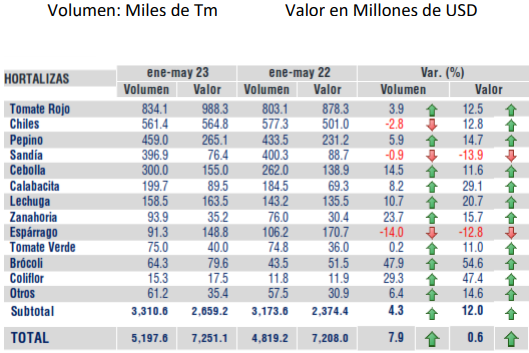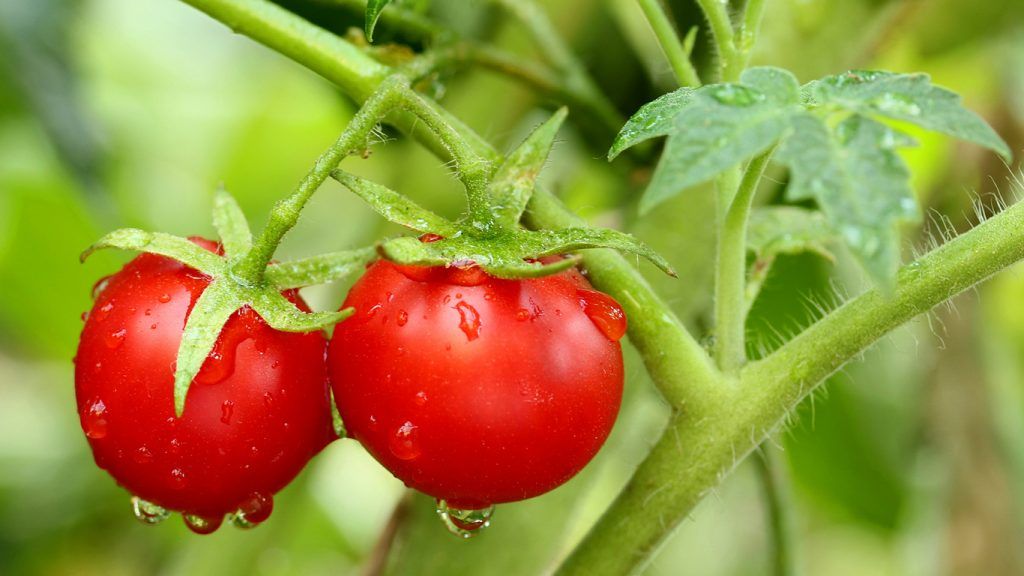The volume of vegetable exports from Mexico from January to May 2023 was 3,310,600 tons, reflecting an increase of 4.3% compared to the similar period of 2022, reported the Agricultural Markets Advisory Group (GCMA).

The commercial value of these shipments increased by 12% year-on-year to US$2,659.2 million.
Vegetable exports
Among the main vegetables that recorded increases in their export volume were: broccoli (47.9%), cauliflower (29.3%), carrots (23.7%), onion (14.5%), lettuce (10.7%), zucchini (8.2%), cucumber (5.9%), red tomato (3.9%) and green tomato (0.2%).
From another angle, vegetables that increased their exported value were: broccoli (54.6%), cauliflower (47.4%), zucchini (29.1%), lettuce (20.7%), carrot (15.7%), cucumber (14.7%), chilies (12.8%), red tomato (12.5%), onion (11.6%) and green tomato (11 percent).
Agrifood
Mexico, following the trend that began in 2015, is a net exporter of agricultural products.
The agricultural trade balance showed a positive result throughout the period under review, increasing from US$4.389 billion in 2016 to US$12.065 billion in 2020, although in 2021 it dropped to US$6.740 billion due to the international conjuncture.
The main export products have traditionally been fruits and vegetables, while the importance of alcoholic beverages (beer) increased in 2021; among import products, cereals (yellow corn), seeds and meat stand out.
The United States is the main market for both exports and imports.
Mexico imports most agricultural products under preferential regimes, especially products from Canada and the United States, but also from Chile and Uruguay.
The average applied tariff on agricultural products (WTO definition) decreased from 14.3% in 2016 to 13.2% in 2021.
Despite this reduction, it is still higher than the average applied tariff on non-agricultural products, which was 5.9% in 2021.
On average, the highest duties, by WTO category, continue to be applied to sugar and confectionery (40.9% in 2016 and 30% in 2021) and alcoholic beverages and liquids and tobacco (23.1% in 2016 and 24.4% in 2021).
In third place are dairy products (23.6% in 2016 and 22.1% in 2021).
In addition, most of the tariffs above 25% are used for agricultural products.

